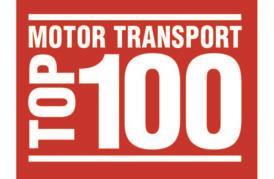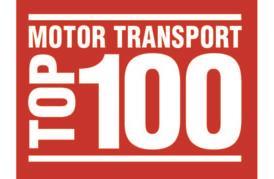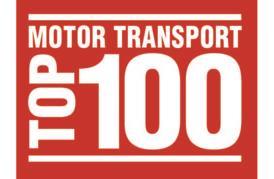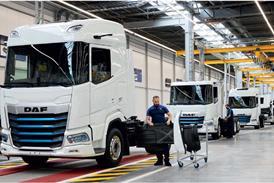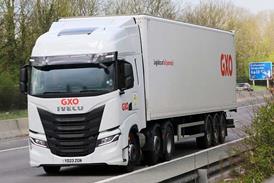The driver shortage is now the biggest issue facing the road haulage industry, with the total number of drivers decreasing each year. The RHA has quite rightly focused on how the industry can be made more attractive to newcomers by suggesting government funding for vocational training to ease the cost to the individual of obtaining an LGV licence. In addition many transport fleet operators are thinking of how to retain existing drivers as well as attract new ones, but is anyone asking why the numbers of drivers are declining so rapidly, and is the industry really that unattractive?
Some believe that vocational training should lead to a professional qualification, which with periodic updates should supersede the Driver CPC process. Vocational training (and a subsequent professional qualification) is a good way forward but only if the industry is made more attractive to encourage people to firstly take the course, secondly they use the qualification to actually join the industry and then most importantly stay in the industry.
Some may say that pay rates versus hours, driver rest facilities, road congestion all contribute to driver dissatisfaction. However I do not believe that pay is the key problem, providing pay rates are fair and competitive. There are HGV Class 1 vacancies being advertised at between £16 and £20 per hour. Speaking with a number of drivers the most common complaint seems to be not the actual driving, but the downtime and frustration due to the inefficiency and ‘hassle’ at the loading and unloading points, ie warehouse and depot operations.
Changing world
In recent years the routes to market available to retailers and wholesalers have expanded and evolved beyond all recognition (compared to say 10 years ago); with the internet being the biggest single contributor to change. Consumers can now place orders 24/7 from a far greater range of sellers for the same or similar product, all competing on price and delivery lead times.
The sellers in turn place greater demands on their suppliers and logistics operations throughout the supply chain (whether they are in-house and/or third party logistics doesn’t matter).
As DCs are put under increasing pressure to meet customer demands in shorter delivery windows, drivers are put under increasing pressure to deliver on time.
Even the announcement by transport minister Claire Perry that the government plans to raise the speed limit for lorries travelling on dual carriageways from 50 to 60 mph will not alleviate pressure on the drivers – it may even increase as they can now potentially do more delivery drops on a route.
Whilst not all of the issues above can be instantly solved there are things that businesses can do at an operational logistics level to relieve pressure on drivers and in fact the entire logistics operation.
Lack of planning
What I observe regularly with many of the companies that I visit is that lack of planning and process for order picking, consolidation, despatch and transport planning. Far worse than a lack of any process or procedures is the lack of compliance with the processes and procedures that are supposedly in place. Lack of process at the loading/unloading point directly delays drivers; the very people who then receive the complaint at the point of delivery or collection for either being late or with the wrong order.
It is not surprising that the job as a driver, which is affected by so many other parts of the logistics and transport operations, all of which are out of the driver's control, is perhaps not as popular as we want it to be.
It is down to companies to put it right through improved transport and logistics operations process, planning and management. Most of the operational issues have evolved and not perhaps had the attention they need, as the sole focus has been to satisfy the consumer at whatever cost. I often hear “our business isn’t broken, we get our product out the door and delivered to the customer, but we feel we could probably do it better”. In most cases this is true and the “doing it better” is exactly the point.
Cut-off
For example, if the order cut-off time for same day despatch is 5pm, then that is the order cut-off time because that determines the order picking routines, consolidation, marshalling, vehicle loading and departure times and subsequent delivery times in the logistics operation.
If orders are frequently taken later than the current "cut-off" time, then change the cut-off time to reflect that. This will then be the point in time from which the rest of the logistics operations can be planned accordingly. Once the logistics network is planned against different criteria then the pick, pack and despatch operations and processes need to be changed to ensure they meet the distribution requirements.
Any plan needs to have some flexibility built into it, so make allowances for admin/paperwork and vehicle checks at the beginning and end of shift times for drivers and be realistic on travel, rest and load/unload times.
Transport resources and the infrastructure that supports them, including the warehouse and distribution centre processes, need to be periodically reviewed to reflect customer service levels, sales volumes and product portfolio changes over time. If you are using transport and operations planning and modelling tools (either for daily planning or strategic transport network design) then allow for a lower efficiency percentage, as if you base your plans on calculations at 100% efficiency you will be planning to fail.
Correctly planning your logistics network operations, implementing the right processes to meet your plans, managing the compliance to those processes and showing appreciation to the job your drivers do will all play a part in determining the fate of the transport and haulage industry.
Gideon Hillman, MD, Gideon Hillman Consulting







